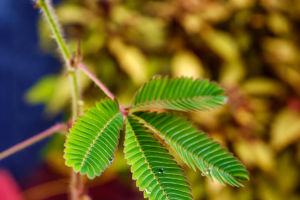The enchanting cherry blossoms, known as sakura, are one of the most iconic natural wonders of Japan. Depending on the time of year and the region you visit, the sight of pink and white blossoms adorning the trees is an unforgettable experience.
Lykkers, the sakura season paints the country with hues of soft pastels, symbolizing the fleeting beauty of life itself.
The sakura blooms typically occur in spring, creating a breathtaking spectacle. As the blossoms gently unfurl, they fill the air with a soft fragrance, and their short-lived nature adds to their mystique. In Japan, sakura is more than just a flower—it's a symbol of life’s transient beauty.
Symbolism and Cultural Significance of Sakura
The meaning behind the cherry blossoms runs deep in Japanese culture. The sakura represents both life and death, beauty and impermanence.
While the blooms evoke feelings of joy and vitality, their brief life cycle reminds us of the impermanence of all things. The sakura blooms for only a short period, often lasting just a few weeks before the petals fall. This cycle reflects the ephemeral nature of existence, making the cherry blossoms a poignant symbol in Japanese traditions.
The cherry blossom also embodies renewal and rebirth, marking the arrival of spring and the promise of new beginnings. The blossoms remind people to appreciate the beauty of the present moment and embrace life's fleeting pleasures.
The Hanami Tradition: A Celebration of Sakura
One of the most cherished traditions during sakura season is the hanami, or cherry blossom viewing. Hanami involves gathering with family and friends under the sakura trees to admire the blossoms and celebrate the arrival of spring. Originally, this practice was linked to ancient rituals where people offered prayers for a bountiful harvest.
Today, it has evolved into a lively social occasion filled with picnics, songs, and festive gatherings. While the essence of hanami has changed over the centuries, the practice of gathering under the cherry blossoms remains an enduring part of Japanese culture.
Sacred Cherry Trees in Japan
Across Japan, certain cherry trees are considered sacred, and their presence is often tied to local folklore. These sacred trees, known as kodama, are believed to be inhabited by spirits. The trees are marked with shimenawa, sacred ropes, which signify their holy status.
Some of these trees have been revered for centuries and are said to possess mystical powers. If a person is disrespectful toward these trees, it is believed that misfortune will follow. One such sacred cherry tree is the Uba-zakura, or "nurse's cherry tree." This tree is believed to be the embodiment of a nurse who sacrificed her life to save a child under her care. It is said that her spirit continues to live on through the tree, adding to the mystique of the sakura tradition.
Famous Cherry Trees in Japan
Several cherry trees in Japan have gained fame for their age, size, and cultural significance. One such tree is the Miharu Takizakura, located in the city of Miharu, Fukushima.
Known as the "waterfall cherry tree," this majestic tree has branches that extend over 20 meters in width and stands more than 12 meters tall. It is believed to be over 1,000 years old, and each year, it draws thousands of visitors during its peak bloom in April. The sight of its cascading flowers is nothing short of spectacular. Another famous tree is the Usuzumi Zakura in Gifu, an ancient cherry tree believed to be more than 1,500 years old. The tree's flowers begin as pale pink buds and eventually fade to a delicate white before turning a soft gray, creating a striking visual effect.
In Hokuto, Yamanashi, the Jindai-Zakura is one of the oldest cherry trees in Japan, estimated to be between 1,800 and 2,000 years old. This monumental tree stands over 10 meters tall and has a circumference of nearly 12 meters. It is a living testament to the enduring spirit of Japan's natural heritage.
Planning Your Visit to Cherry Blossom Sites
Japan offers several remarkable locations to experience the beauty of sakura. For a memorable experience, consider visiting one of these iconic trees during the bloom season.
The Miharu Takizakura in Fukushima is a must-visit destination. To reach it, take a train from Fukushima Airport to Koriyama Station, then transfer to the Ban-Etsuto Line and head to Miharu Station. The sakura season in late April is the best time to visit, but be prepared for crowds as this is a popular tourist spot.
For a more tranquil experience, visit the Usuzumi Zakura in Gifu. This ancient tree, located in Usuzumi Park, can be reached by taking a shuttle from Nagoya Airport to Ogaki Station, followed by a local train ride. The tree blooms in early April, and its unique color changes make it an interesting site for visitors.
The Jindai-Zakura in Yamanashi is another ancient cherry tree worth seeing. Located in the Jindaji area, the tree is believed to have been planted over 1,800 years ago. The best time to visit is during its peak bloom in early April, and it can be accessed by taking a train to the nearby station.
Final Thoughts
The cherry blossoms of Japan are more than just a natural wonder; they are a symbol of beauty, impermanence, and cultural heritage.
Experiencing sakura season is a celebration of life’s fleeting moments and a chance to connect with the deeper meanings embedded in Japanese culture. Whether you are visiting the sacred trees or simply enjoying a hanami picnic, the cherry blossoms offer a unique opportunity to witness the timeless beauty of nature in Japan.


